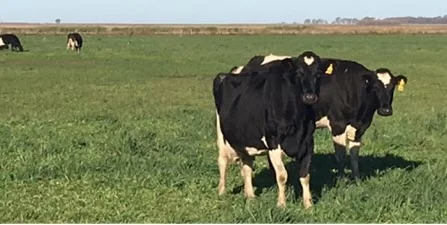Table Of Contents
Butter Oil Is Nutrient-Dense—Naturally
“We have used our scientific knowledge largely to change nature’s foods and thereby have defeated nature’s law of growth and health. The primitives cooperate with nature where we do not.”
~ Dr. Weston A. Price
In his travels around the world to study traditional diets, Dr. Weston A. Price made the signal discovery that a substance he came to refer to as “high-vitamin” butter oil had exceptional nutritional value. Dr. Price found that nutrient-dense butter oil, especially when paired with cod liver oil, helped many of his patients improve their dental and overall health.
Dr. Price’s research highlighted one important caveat: the butter oil needed to come from grass-fed cows, and the grass needed to be rapidly growing green grass. His book, Nutrition and Physical Degeneration, also suggested that related factors such as altitude and season might play a role in priming butter oil for nutrient density. Describing Swiss villagers living in the Alpine Loetschental Valley, for example, Dr. Price noted that their high-altitude dairy samples contained a much higher vitamin content than commercial samples from lower regions.1 The Alpine villagers, who exhibited “some of the finest physiques in all Europe,” extolled the special “life-giving” qualities of June butter, in particular—“made when the cows eat the grass near the snow line.”
Life-giving dairy
Fast-forward to the present. Dairy scientists who are studying a “rock star” fatty acid found in the milk and meat of ruminants—conjugated linoleic acid (CLA)—have affirmed that products derived from pastured ruminants offer unique health benefits.2 The impressive line-up of benefits from food-sourced CLA includes “dramatic” and “unequivocal” cancer prevention effects (operating through a broad range of mechanisms and “potent” even at extremely low levels of CLA), anti-diabetic effects, and a positive influence on bone formation and weight management.3
It is important to note that synthetic CLA does not confer the same benefits and, in fact, may actually increase disease risks.4 Recognizing that foods with a naturally rich CLA content are the “safe alternatives,”5 some researchers are, therefore, calling for beef and dairy foods to be designated as “functional foods”—that is, foods that promote optimal health.6 As we will see in the rest of this article, there is ample reason to include properly produced and prepared butter oil in this pantheon of functional foods.

CLA and the rumen
There are multiple forms of CLA, but the main form present in ruminant animal products is rumenic acid (RA).7The name provides a direct clue as to where this form of CLA is produced—in the rumen of cows and other ruminant animals. Through the action of fermentative rumen bacteria, linoleic acid (an omega-6 fatty acid) gets converted into CLA.8 Because this occurs as part of a lengthier chain of events, experts describe CLA/RA as a “metabolic intermediate” of the rumen bacteria while noting the important role of this symbiotic process in animal health and longevity.9
Vaccenic acid (VA) is another precursor of CLA and is the main naturally occurring trans fatty acid in milk fat. As with CLA, research shows that vaccenic acid likely has beneficial health effects, including anti-carcinogenic effects10and protection against metabolic syndrome and intestinal inflammatory diseases.11 As long ago as the 1940s, a group of researchers isolated vaccenic acid content as the reason that butter fat had “superior nutritive value” compared to vegetable oils.12
Humans may be capable of converting some linoleic acid to CLA, but to a far lesser extent than ruminants—and only if individuals have a supremely healthy gut.13 Consequently, consumers should appreciate products from pastured ruminants as offering a treasure trove of benefits that are difficult to access in any other way. The research evidence bears this out: lactating women who consume large quantities of dairy products and beef have a significantly higher concentration of RA in their breast milk compared to women who consume little of these products.14 If Americans routinely substituted butter for margarine, their dietary RA intake would increase substantially.15
The grass-fed difference
Echoing Dr. Price’s observations, modern researchers have noted that the concentration of CLA in ruminant products varies widely according to what the animals eat.16 Grass-based diets create a more “favorable” rumen environment and facilitate “bacterial synthesis,”17 whereas feeding ruminants grain lowers the ruminal pH and promotes inflammatory disorders.18 Thus, the pastured piece of this picture is crucial—milk, cream and butter from ruminants who are 100% grass-fed have a CLA content that is as much as seven times higher than dairy products from feedlot animals!.19 Vitamin E and beta-carotene levels are also significantly higher in grass-fed dairy products. Fermentation (such as with kefir, yogurt, and cheese) boosts the CLA content still further.20 It is interesting to note that in Dr. Price’s day, substantially more dairy farms were pasture-based, and farms typically separated and clabbered (soured) their cream on the premises before transporting their products for sale.
Recent research also confirms Dr. Price’s observations about altitude and season, showing that milk from “high altitude grazers” and from cows raised in cooler climates has a higher omega-3 and CLA content and that animals grazed at high altitudes “may produce the healthiest foods.”21

Concentrated butter oil
From the beginning, Green Pasture Products has taken pride in producing butter oil that adheres to the standards first established by Dr. Price.
X-Factor™ Gold Concentrated Butter Oil is made from cows grazing on rapidly growing green grass and, in addition, takes into account factors such as speed of grass growth, timing of grazing, grass species, and season. Green Pasture also uses a gentle extraction process that concentrates the oil through centrifugation—just as Dr. Price did.
Both CLA and vaccenic acid are fat-soluble. What this means is that when the butter oil is extracted, the valuable vaccenic acid and CLA present in the fat come along for the ride. Testing of Green Pasture’s concentrated butter oil confirms that CLA is prominent. As modern studies continue to praise butter naturally enriched with VA and RA as “worthy of further consideration as a ‘Functional Food,’” one can only marvel at Dr. Price’s ahead-of-his-time wisdom in recognizing the life-giving properties of grass-fed butter and concentrated butter oil so many decades ago.
References:
- Price, Weston A. Nutrition and Physical Degeneration, 6th edition. La Mesa, CA: The Price-Pottenger Nutrition Foundation, 1939, pp. 24-26.
- Ballantyne, Sarah. Conjugated linoleic acid (CLA): A rockstar nutrient. The Paleo Mom, April 30, 2018. https://www.thepaleomom.com/conjugated-linoleic-acid-cla-a-rockstar-nutrient/.
- McGuire MA and McGuire MK. Conjugated linoleic acid (CLA): A ruminant fatty acid with beneficial effects on human health. Journal of Animal Science 2000;77:1-8. See also: Singh VP and Sachan N. Conjugated lenoleic acid: A good fat for human health—a review. International Journal of Dairy Science 2011;6(3):165-171.
- Van Nieuwenhove CP, Terán V, González SN. Conjugated linoleic and linoleic acid production by bacteria: development of functional foods. Chapter Three in: Rigobelo E (Ed.), Probiotics, IntechOpen; 2012. Available at https://www.intechopen.com/books/probiotics/conjugated-linoleic-and-linolenic-acid-production-by-bacteria-development-of-functional-foods.
- Singh and Sachan, 2011.
- McGuire and McGuire, 2000; Van Nieuwenhove et al., 2012.
- McGuire and McGuire, 2000.
- Lehnen TE, da Silva MR, Camacho A, Marcadenti A, Lehnen AM. A review on effects of conjugated linoleic fatty acid (CLA) upon body composition and energetic metabolism. Journal of the International Society of Sports Nutrition 2015;12:36.
- Singh and Sachan, 2011.
- Lim JN, Oh JJ, Wang T, et al. trans-11 18:1 vaccenic acid (TVA) has a direct anti-carcinogenic effect on MCF-7 human mammary adenocarcinoma cells. Nutrients 2014;6(2):627-636.
- Jacome-Sosa M, Vacca C, Mangat R, et al. Vaccenic acid suppresses intestinal inflammation by increasing anandamide and related N-acylethanolamines in the JCR:LA-cp rat. Journal of Lipid Research 2016;57(4):638-649.
- Geyer RP, Nath H, Barki VH, Elverjem CA, Hart EB. The vaccenic acid content of various fats and oils [Letter]. The Journal of Biological Chemistry 1947;169:227-228.
- Ballantyne, 2018.
- McGuire and McGuire, 2000.
- McGuire and McGuire, 2000.
- Van Nieuwenhove et al., 2012.
- Daley CA, Abbott A, Doyle PS, Nader GA, Larson S. A review of fatty acid profiles and antioxidant content in grass-fed and grain-fed beef. Nutrition Journal 2010;9:10.
- Huo W, Zhu W, Mao S. Effects of feeding increasing proportions of corn grain on concentration of lipopolysaccharide in the rumen fluid and the subsequent alterations in immune responses in goats. Asian-Australasian Journal of Animal Sciences 2013;26(10:1437-1445.
- Singh and Sachan, 2011.
- Singh and Sachan, 2011.
- Singh and Sachan, 2011.



